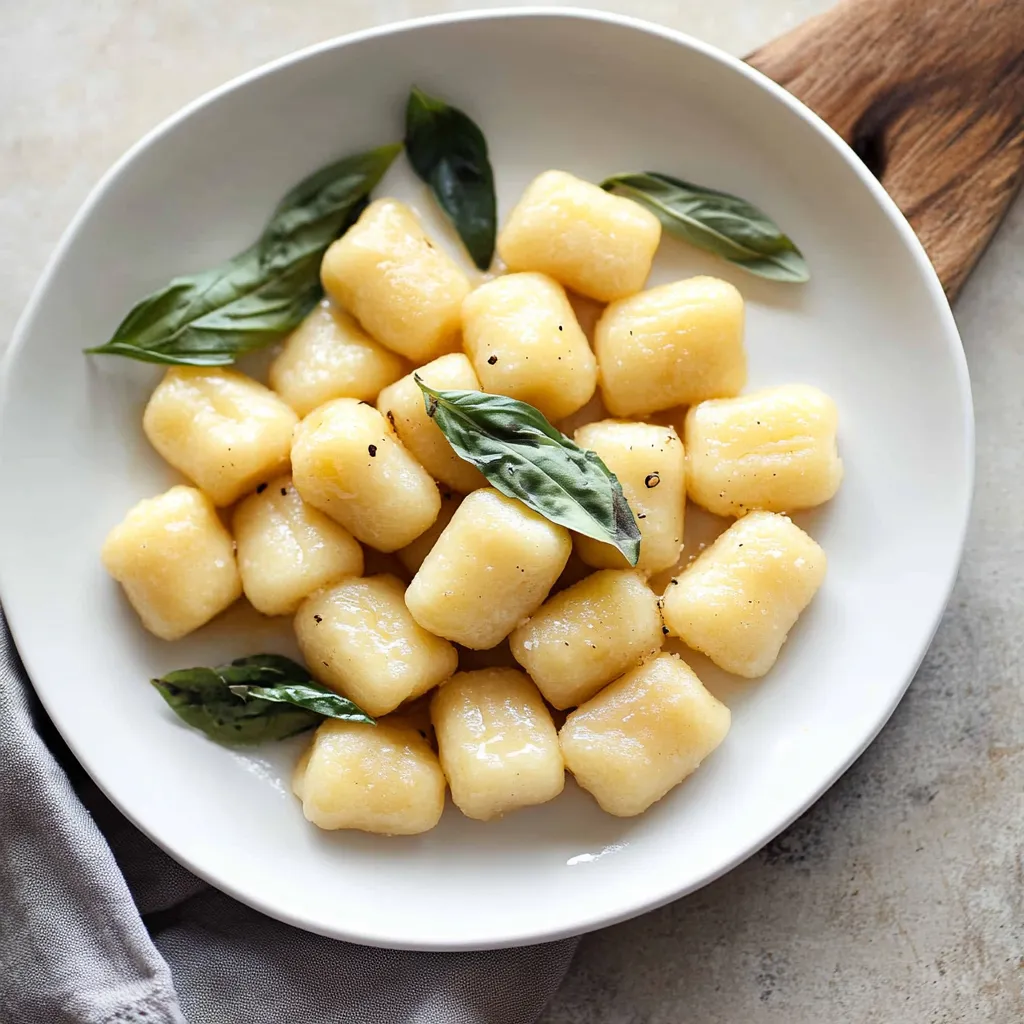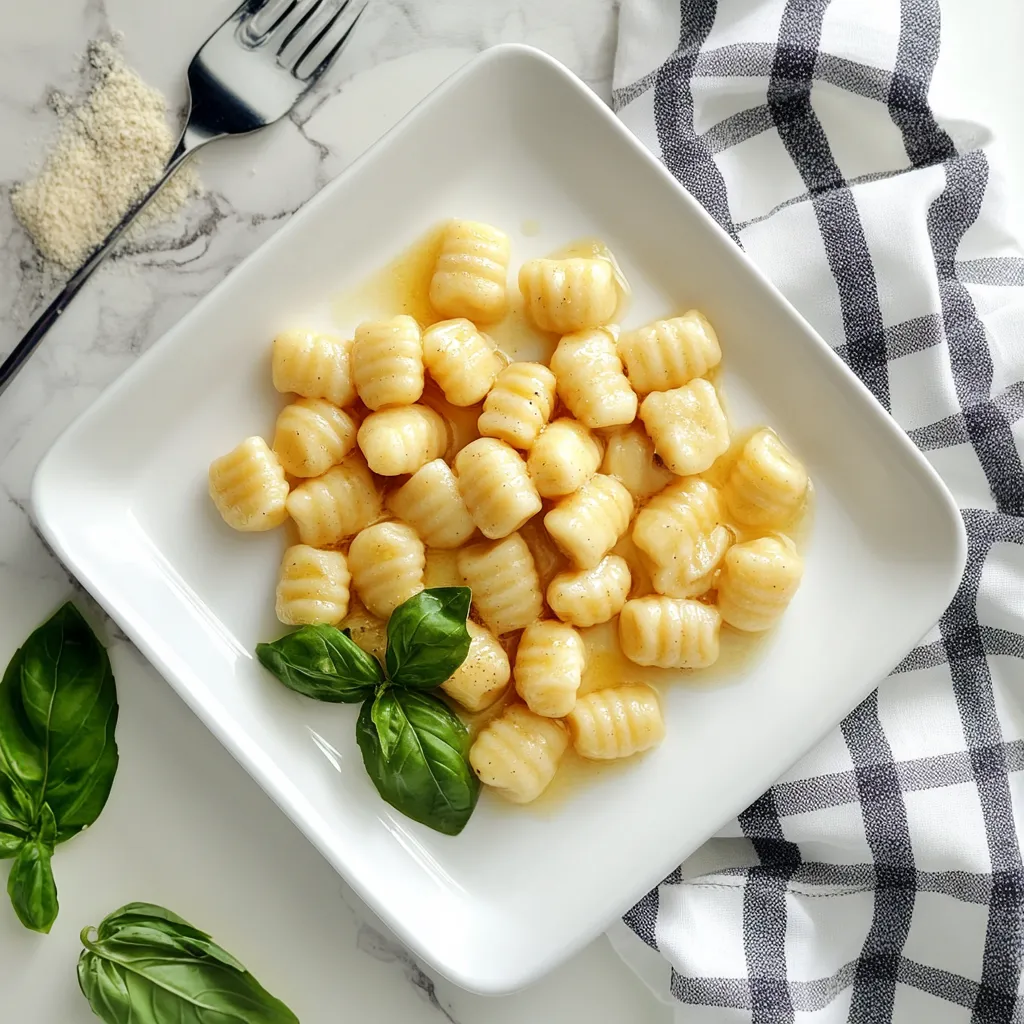nocchi is the kind of food that wraps your palate in a soft hug—light, pillowy, and full of comfort. For those who are gluten intolerant or seeking a healthier option, making gluten free gnocchi at home is not just possible—it’s simple and deeply satisfying. Most store-bought options fall short in flavor or texture, but when you make it yourself with real ingredients, the results are unmistakably better.
In this article, you’ll learn how to make traditional-style gnocchi without gluten, get detailed tips for perfect texture, and understand why each ingredient matters. Whether you’re a beginner or an experienced home cook, this guide will help you confidently craft gnocchi that’s both tender and delicious.

What Is Gluten Free Gnocchi?
Gnocchi (pronounced “nyoh-kee”) are small, soft dumplings traditionally made with potato, flour, and egg. In the gluten-free version, we replace the wheat flour with a combination of alternative flours like rice flour, tapioca starch, or almond flour to achieve a similar texture without compromising flavor or structure.
Key Terms to Know:
-
Starchy Potatoes
Potatoes like Russet or Yukon Gold are ideal because they’re dry and fluffy, which helps the dough stay light and easy to shape. -
Xanthan Gum
A common gluten substitute that mimics elasticity. It isn’t always necessary if you use the right flour blend and technique. -
Potato Ricer
A tool that finely mashes potatoes without overworking them, resulting in fluffier gnocchi. -
Bench Flour
The flour used to dust your work surface and prevent sticking while shaping gnocchi.
Ingredients for the Perfect Gluten Free Gnocchi
Each ingredient plays a crucial role in the final texture and taste. Here’s a clear definition list and explanation of what you need:
-
2 lbs Russet Potatoes
High-starch and low-moisture for the fluffiest result. -
1 Large Egg + 1 Egg Yolk
Adds richness and structure, helping bind the dough together. -
1 tsp Salt
Enhances the overall flavor of the gnocchi. -
¼ tsp Ground Nutmeg (optional)
Adds subtle warmth and depth to the dough. -
1 Cup Rice Flour
Forms the base of the dough; it’s light, neutral, and easy to digest. -
¼ Cup Tapioca Flour or Cornstarch
Adds elasticity and chew to the final texture. -
¼ tsp Xanthan Gum (optional)
Mimics the binding quality of gluten. Can be skipped if using starchy potatoes and tapioca. -
Coarse Rock Salt
Used during baking to help draw out excess moisture from potatoes.

Ingredient Substitutes and Add-Ins
Many recipes don’t cover options for dietary needs or flavor variations. Here are practical swaps and upgrades:
-
No Eggs?
Use 2 tablespoons of olive oil and 2 tablespoons of non-dairy milk or mashed avocado for a vegan version. -
No Rice Flour?
A blend of oat flour and cornstarch can be used but may make the gnocchi slightly denser. -
Flavor Boosters:
◦ Chopped herbs (basil, parsley)
◦ Grated parmesan or nutritional yeast for a cheesy kick
◦ A dash of black pepper or garlic powder
Step-by-Step Instructions for Making Gluten Free Gnocchi
Making gluten free gnocchi at home might sound daunting, but the process is relatively simple and incredibly rewarding. With just a few key techniques, you’ll be making perfectly soft, pillowy gnocchi that will make your taste buds sing. Here’s the complete guide:
Step 1: Bake the Potatoes
Baking the potatoes instead of boiling them helps reduce moisture, ensuring your dough doesn’t get too sticky. Too much moisture can lead to dense, gummy gnocchi.
-
Preheat the oven to 400°F (200°C).
-
Scrub the potatoes thoroughly to remove dirt and imperfections. Prick each potato with a fork to allow steam to escape.
-
Place the potatoes on a baking sheet, preferably over a layer of rock salt (this helps absorb excess moisture).
-
Bake for 50 to 60 minutes, or until the potatoes are tender when pierced with a fork.
Step 2: Prepare the Potatoes
Once the potatoes are done, let them cool just enough to handle. While still warm, peel them and immediately pass them through a potato ricer into a large mixing bowl. Ricing the potatoes prevents them from becoming mashed, which can result in a sticky dough.
Step 3: Make the Dough
-
Add the egg and egg yolk to the riced potatoes, followed by the salt and nutmeg. Mix gently with your hands or a fork to combine.
-
Whisk together the dry ingredients (rice flour, tapioca flour, and xanthan gum) in a separate bowl, and slowly add them to the potato mixture. Mix until a dough forms.
-
Check the dough’s consistency: It should be slightly sticky but still easy to handle. If the dough is too wet, add a little more flour, a tablespoon at a time.
Step 4: Roll the Dough
Divide the dough into four equal portions. On a lightly floured surface, roll each piece into a log about 1-inch thick. Be sure to keep your surface lightly dusted with rice flour to prevent sticking.
Step 5: Cut and Shape the Gnocchi
-
Cut the logs into 1-inch pieces using a sharp knife.
-
Shape each piece by rolling it gently over the tines of a fork to create the traditional ridged pattern. This not only gives the gnocchi a classic appearance but also helps the sauce cling better.
Step 6: Cook the Gnocchi
-
Bring a large pot of salted water to a boil. Gently drop the gnocchi into the water, one by one. Cook in batches if needed to avoid overcrowding.
-
Boil for 2-3 minutes, or until the gnocchi rise to the surface. This indicates they’re cooked through and ready to be drained.
Step 7: Serve and Enjoy
-
Drain the gnocchi and toss them with your favorite sauce. Serve immediately with a simple tomato sauce, pesto, or a light butter sauce topped with fresh herbs.
-
For a crispy finish, sauté the cooked gnocchi in a pan with a little olive oil or butter to give them a slightly golden crust.
Tips for Perfect Gluten Free Gnocchi
The process of making gluten free gnocchi is simple, but these helpful tips will ensure your gnocchi comes out perfectly every time.
-
Use starchy potatoes like Russets for the best texture. Waxy potatoes will result in a denser gnocchi.
-
Don’t overwork the dough: Overworking it will lead to tough gnocchi. Mix until just combined.
-
Don’t skip the cooling step: Cooling the potatoes after baking helps firm them up, which makes the dough easier to handle and less sticky.
-
Dust your surface: Use plenty of rice flour when rolling and cutting the dough to prevent sticking.
-
Cook in batches: If you’re making a large batch, avoid overcrowding the pot to ensure each gnocchi cooks evenly.

Storing and Freezing Gluten Free Gnocchi
If you’ve made a large batch of gluten free gnocchi and need to store it, here’s what you can do:
Storing in the Refrigerator:
-
Place the cooked and cooled gnocchi in an airtight container and refrigerate for up to 3 days.
-
To reheat, you can sauté the gnocchi in a pan or briefly microwave them, adding a small splash of water to retain moisture.
Freezing:
-
Freeze uncooked gnocchi: After shaping the gnocchi, place them on a baking sheet in a single layer and freeze for 1-2 hours. Once frozen, transfer them to a freezer-safe container or bag for up to 3 months.
-
To cook frozen gnocchi: You don’t need to thaw them. Just drop them directly into boiling water and cook for 3-4 minutes or until they rise to the surface.
Nutritional Benefits of Gluten Free Gnocchi
Gluten free gnocchi is not only delicious but also a healthier alternative to traditional gnocchi, especially for those who need to avoid gluten. By making it at home, you control the ingredients, which means you can make it more nutritious by adding wholesome, fresh ingredients.
Key Nutrients in Gluten Free Gnocchi
While gluten free gnocchi is typically considered a comfort food, it offers several nutritional benefits when made with quality ingredients. Here’s a look at what you can expect:
-
Carbohydrates: The main energy source in gnocchi comes from potatoes and rice flour. While the carbs are important for energy, using a high-quality flour helps ensure the dough remains light and doesn’t weigh you down.
-
Protein: Eggs contribute small amounts of protein to the dough, which supports muscle repair and overall health.
-
Fiber: Depending on the flour blend used, gluten-free gnocchi can offer some dietary fiber, which is important for digestive health. Tapioca flour also contributes a small amount of fiber.
-
Vitamins and Minerals:
-
Vitamin C: Potatoes are a good source of Vitamin C, an antioxidant that supports immune function and skin health.
-
B Vitamins: Eggs and potatoes provide essential B vitamins like B6, which is important for brain function and energy production.
-
Iron: While not a high source, potatoes and eggs do contribute small amounts of iron, which is crucial for oxygen transport in the body.
-
A Healthier Alternative
Making gluten free gnocchi at home allows you to avoid processed additives and preservatives often found in store-bought options. By choosing the right flour, using fresh potatoes, and limiting added fats, you can enjoy a healthier version of this classic dish. Additionally, the lack of gluten ensures it’s suitable for those with gluten intolerance or celiac disease.
Why You Should Make Gluten Free Gnocchi at Home
Making gluten free gnocchi from scratch has several advantages over buying pre-packaged alternatives. Here’s why you should try it yourself:
-
Better Texture: Homemade gnocchi is always lighter and fluffier compared to store-bought versions, which can sometimes be dense and chewy.
-
Customizable: You control the ingredients. Want to make a vegan version? No problem! Feel free to play with flavor by adding herbs, spices, or cheese to the dough.
-
Cost-Effective: While pre-made gluten-free gnocchi can be pricey, making it at home is affordable, especially when you have most of the ingredients already in your pantry.
-
Satisfaction: There’s something incredibly satisfying about creating gnocchi from scratch. The process itself is fun, and the payoff is delicious.

Final Thoughts on Gluten Free Gnocchi
Gluten free gnocchi is one of those dishes that brings comfort and joy to any meal. Whether you’re preparing it for a special occasion or just to enjoy a weeknight dinner, the combination of soft, pillowy gnocchi and your favorite sauce is sure to please. With just a few simple ingredients and a bit of patience, you can create a dish that’s not only gluten-free but also truly homemade, giving you all the taste of Italy without the gluten.
Give it a try, and enjoy the rich flavors and texture of this gluten-free masterpiece. Your homemade gnocchi will taste even better than you imagined, and you’ll never miss the gluten again!
Gluten Free Gnocchi Recipe Card
Ingredients
-
2 lbs Russet Potatoes (about 4 medium potatoes)
-
1 Large Egg
-
1 Large Egg Yolk
-
1 tsp Kosher Salt (or sea salt)
-
1 pinch Ground Nutmeg (optional)
-
1 Cup Rice Flour (plus more for dusting)
-
¼ Cup Tapioca Flour
-
¼ tsp Xanthan Gum (optional, for added elasticity)
-
Coarse Rock Salt (for baking the potatoes)
Instructions
-
Preheat your oven to 400°F (200°C). Line a baking sheet with parchment paper and sprinkle it with coarse salt.
-
Scrub the potatoes and prick them with a fork. Place them on the baking sheet and bake for 50 to 60 minutes until tender.
-
Let the baked potatoes cool just enough to handle. Peel the potatoes and pass them through a potato ricer into a large bowl.
-
Add the egg, egg yolk, salt, and nutmeg to the riced potatoes. Mix gently until combined.
-
In a separate bowl, whisk together the rice flour, tapioca flour, and xanthan gum. Gradually add this flour mixture to the potatoes, stirring until a dough forms.
-
If the dough is too sticky, add more flour, 1 tablespoon at a time, until the dough is soft but not too sticky.
-
Divide the dough into 4 portions. Roll each portion into a log about 1-inch thick.
-
Cut the logs into 1-inch pieces and shape each piece by rolling it over the tines of a fork to create the ridged pattern.
-
Bring a large pot of salted water to a boil. Carefully drop the gnocchi into the water and cook for 2-3 minutes, or until they rise to the surface.
-
Drain the gnocchi and toss with your favorite sauce. Serve immediately.
Notes
-
Potato Variety: Use Russet potatoes as they are high in starch and give the gnocchi the right texture. Avoid waxy potatoes like red or new potatoes.
-
Flour: Rice flour is essential to keep the gnocchi light. Tapioca flour helps bind the dough, and xanthan gum adds elasticity. You can skip xanthan gum, but it does improve the texture.
-
Storage: You can store uncooked gnocchi in the refrigerator for up to 1 day or freeze them for up to 3 months.
-
Freezing: To freeze, place the uncooked gnocchi in a single layer on a baking sheet. Once frozen, transfer them to a freezer bag and store for up to 3 months.
-
Gluten-Free Vegan Option: Omit the egg and use a mixture of 2 tablespoons olive oil and 2 tablespoons plant-based milk.
Nutritional Facts (Per Serving)
-
Calories: 330 kcal
-
Carbohydrates: 62g
-
Protein: 4g
-
Fat: 8g
-
Saturated Fat: 2g
-
Unsaturated Fat: 6g
-
-
Fiber: 3g
-
Sugar: 2g
-
Sodium: 230mg
-
Potassium: 635mg
-
Vitamin A: 120 IU
-
Vitamin C: 20mg
-
Calcium: 20mg
-
Iron: 2mg
Recipe Details
-
Prep Time: 15 minutes
-
Cook Time: 10 minutes
-
Total Time: 25 minutes
-
Method: Stovetop, Oven
-
Cuisine: Italian, Gluten-Free
-
Servings: 4 servings
-
Calories: 330 kcal per serving
-
Yield: Approximately 4 servings
